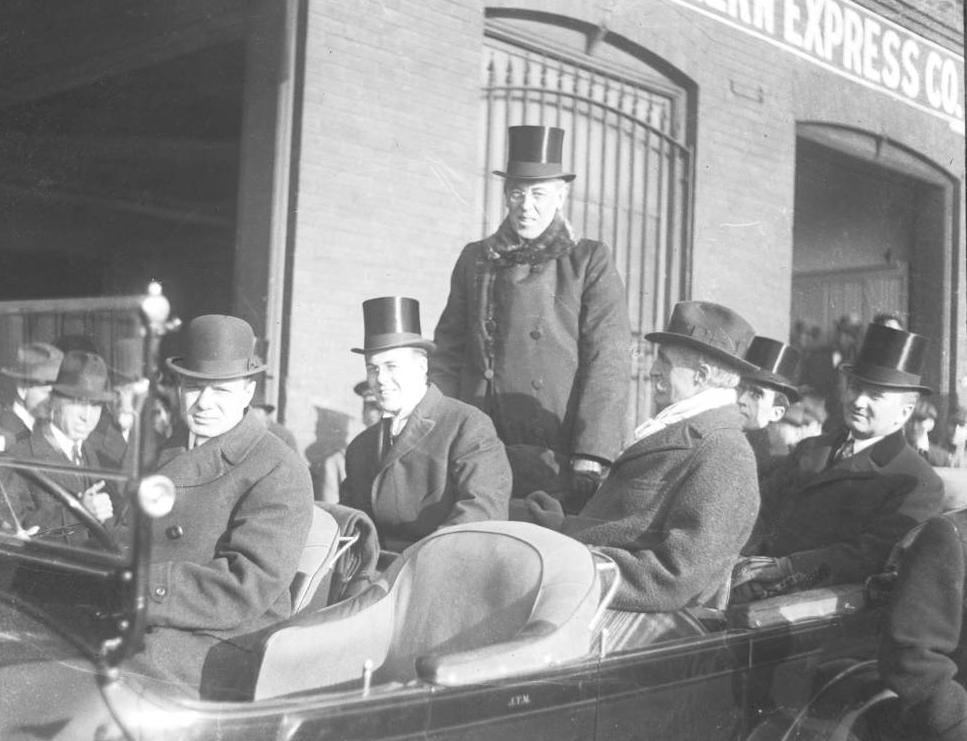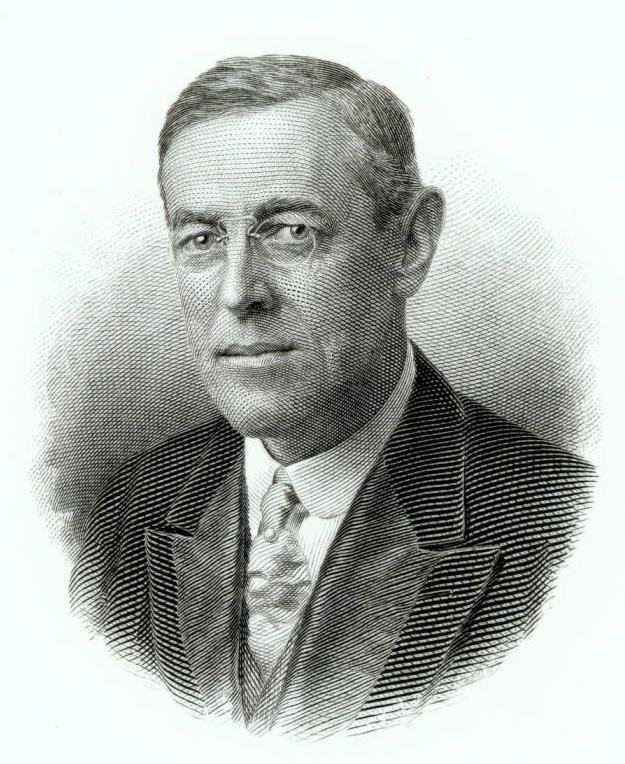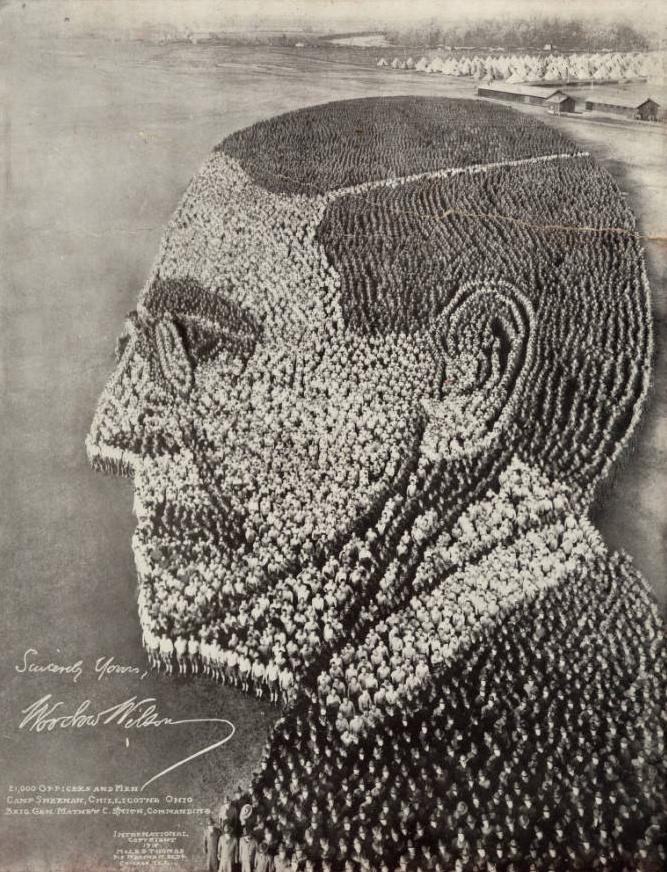The Voice of the People–President Woodrow Wilson

February 3rd marks the anniversary of the death of Woodrow Wilson, the 28th President of the United States. An advocate for democracy and world peace, Wilson led the country through World War I and endorsed the Nineteenth Amendment, which granted suffrage in federal elections to American women.

Wilson’s father, Joseph Wilson, was born in Steubenville, Ohio. After marrying Jessie Woodrow, an immigrant from England, Joseph moved the family to Virginia, where Woodrow Wilson was born in 1856. The elder Wilsons identified strongly with the Southern cause and, later, moved further south and became slave owners, with Joseph Wilson joining the Confederacy and serving as a chaplain to the Confederate Army.
Woodrow Wilson obtained his education from several different institutions, but ultimately received his Ph.D. from Johns Hopkins University after studying history, political science, and German language. Like most U.S. presidents before him, Wilson had studied, and practiced, law, but due to a dislike of the procedural aspects of the practice, had abandoned it, deciding instead to return to school to earn the previously-mentioned Ph.D. in 1886. His career included positions as a college professor and a term as president of Princeton University before he switched to politics. He served a term as governor of New Jersey before being elected president in 1912.
Wilson believed that “the ear of the leader must ring with the voices of the people,” (you can read the speech in which he made this statement, “Leaders of Men,” here at TeachingAmericanHistory.org) and so he focused on progressive reforms during his two terms in office; you can see campaign documents, outlining his platform and showcasing support of his candidacy, here on Ohio Memory. Among his accomplishments: establishment of the Federal Reserve and the Federal Trade Commission; passage of child labor laws; availability of government loans for farmers; and the nomination (and confirmation) of the first Jewish Supreme Court Justice, Louis Brandeis. Wilson also endorsed the Nineteenth Amendment in 1919, allowing for its ratification in 1920. His presidency, however, was marred by his support of segregation – an issue important to southern Democrats, with whom Wilson aligned – and a refusal to intervene in California’s ban on land ownership by Japanese people.

On the worldwide stage, Wilson’s second term was dominated by World War I (see also here and here), which the United States entered in 1917, prompted by the sinking of the Lusitania, German aggression against U.S. merchant ships and an attempt by Germany, through the Zimmerman telegram, to pit Mexico against the United States. Wilson’s request that Congress declare war on Germany was supported by his belief that “the world must be made safe for democracy.” A year later, with Germany defeated, Wilson traveled to Paris and helped to negotiate the Treaty of Versailles (view text of the Treaty here, via the Library of Congress). Wilson also advocated for the League of Nations, earning him the Nobel Peace Prize in 1920.
In October of 1919, Wilson suffered a massive stroke, leaving him partially paralyzed; his health, which had never been strong, would never recover. After the stroke, his second wife, Edith, and Wilson’s cabinet fulfilled many of his duties through the end of his term in 1921–a fact that was kept largely hidden from the public until Wilson’s death on February 3, 1924.
Thank you to Shannon Kupfer, Digital Initiatives Librarian at theState Library of Ohio, for this week’s post!



Leave a Reply
You must be logged in to post a comment.